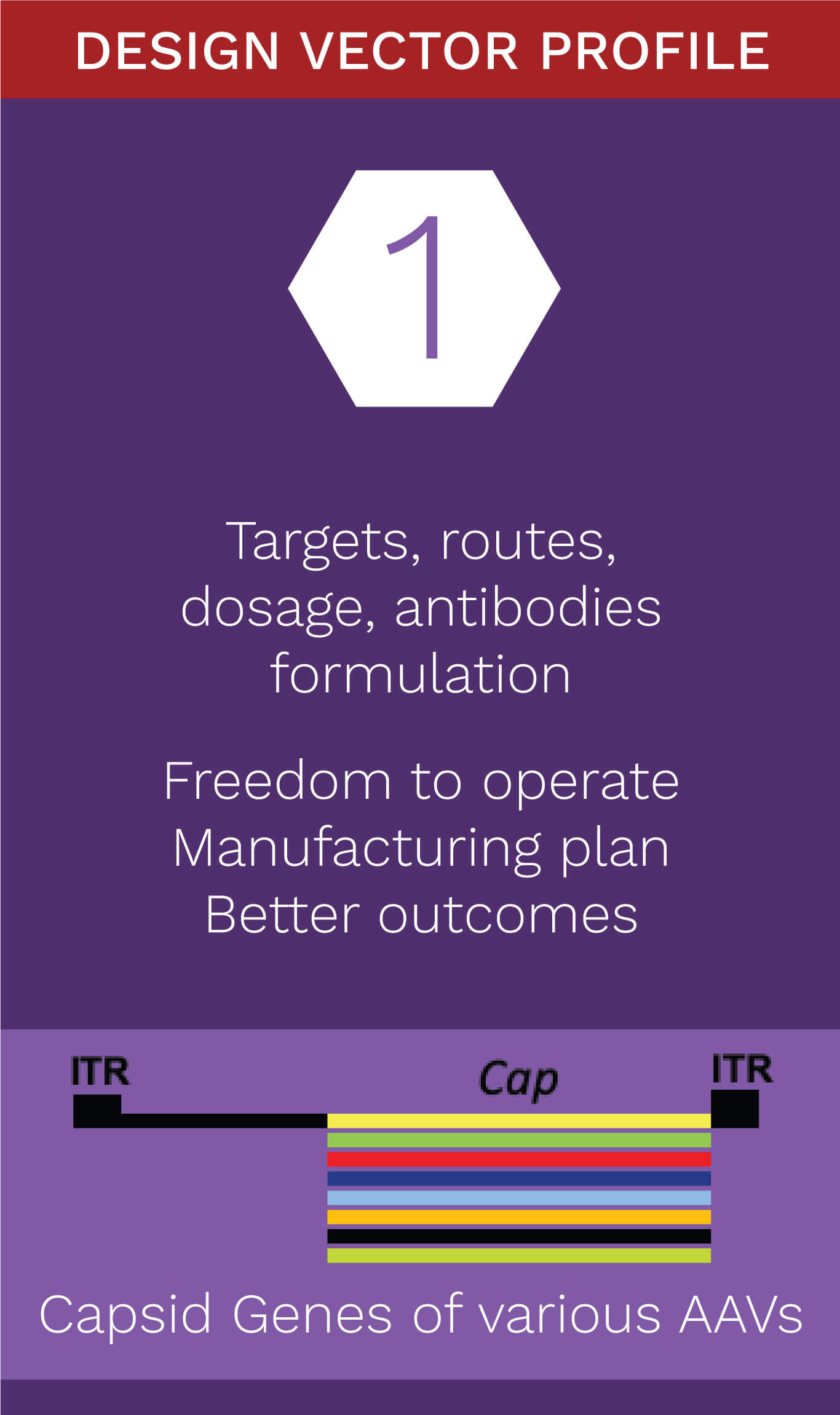Revolutionizing Capsid Development
Naturally occurring serotypes have long enabled delivery of AAV gene therapeutics. However, precise tissue targeting without off-target implications is essential to advancing therapeutic performance. So we asked the question: “How can we improve patient outcomes by advancing the capsid engineering process?”
Rational design for chimeric capsids with infinite possibilities
A critical component of our gene therapy technology platform is a proprietary application of bioinformatics, crystal structure analytics, in vivo/in vitro modeling, and genome sequencing techniques. This allows us to alter the natural tropism range of chimeric AAV vectors.
Our unique rational design process expands the functional capability of proteins from naturally occurring serotypes, as well as proteins from other capsid sequences. Our approach supports the circumvention of neutralizing antibodies and transforms how AAV vectors are delivered for monogenic diseases, pathway diseases, ultra-rare conditions, and ultimately to a range of acquired conditions.




A new generation of chimeric vectors
Chimeric AAV capsids enable efficient gene delivery with immunological properties for a precise tissue target while de-targeting tissues that normally accumulate high levels of AAV.
- Systemic administration for reliable tissue/cell specificity (central nervous system, cardiac, muscle, etc.)
- Ability to specifically de-target organs, such as the liver
- Systematic approach for mixing and matching natural serotype proteins and any capsids for efficient transduction
- A screening process combines proven bioinformatics, applied clinical performance and animal study data
- Supports product development to circumvent limitations imposed by neutralizing antibodies in naturally occurring serotypes
Novel constructs maximize transduction
Heparin and heparan sulfate binding chimeric vectors
This family of chimeric capsids contains modified receptor-recognition sites that change the cell or tissue tropism of the capsids, shown to mediate modified transduction of target cells in lung tissue.
Inner Loop chimeric vectors
Chimeric capsids with modified inner-loop regions have shown novel biodistribution and transduction patterns after systemic administration. Primarily for heart, skeletal muscles, and brain tissues, inner-loop vectors can increase the therapeutic index with some inner-loop variants showing 10-100x reduction of liver transduction while retaining high-level tropism for other target tissues (Asokan A., 2010; Shen S. 2013). These properties have encouraged the use of inner-loop mutants in clinical programs targeting cardiac muscle.
Dual Glycan receptor chimeric vectors
In addition to demonstrating the modularity of glycan receptor footprints on viruses, our approach provides design parameters to upgrade the current AAV vector toolkit for clinical gene therapy. New AAV capsids can be evolved to recognize different host glycans through mutagenesis and experimental adaptation. These AAV capsid mutations affect viral binding to cells with carbohydrate receptors, demonstrating modularity of glycan receptor footprints on viruses. This exploits two distinct glycan receptors for cell entry and a novel class of adeno-associated viruses (AAV).

Dual glycan binding AAV
Prototyping
A prototypical dual glycan binding AAV strain was engineered by “grafting” a galactose (Gal) binding footprint from AAV serotype 9 onto the heparan sulfate binding AAV serotype 2.
The resulting chimera, AAV2G9, interchangeably exploits Gal and HS as evidenced by competitive inhibition assays with lectins and glycans (Shen S., 2013). AAV2G9 mediates rapid onset and sustained, higher transgene expression in vivo compared to parental AAV serotypes.
This demonstrates the modularity of glycan receptor footprints on viruses and design parameters to upgrade RhiaPharmaceutical’s AAV vector toolkit for clinical gene therapy.
Are you our next great collaborator?
Harness the power of our technology, scientific expertise, and clinical process experience to bring discoveries to life.




